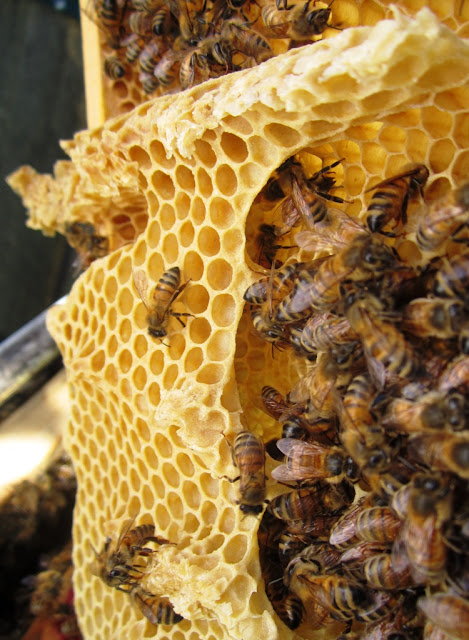This article below is lifted directly out of the BBC website, I hope they don't mind, and here is a link as well:
http://www.bbc.co.uk/news/technology-20080389
The varroa mite is endemic throughout both feral and cultivated honey-bee colonies (...but not here..... yet!).The pests that honey-bees bite include varroa mites as well as wax moth larvae.
Honey-bees are known for their sting, but scientists have
now discovered they can also bite.
Bees resort to biting when faced with pests, such as
parasitic mites, that are too small to sting.
Close study of the biting behaviour has revealed that they
secrete a chemical in their bite that stuns pests so they are easier to eject
from a colony.
Tests suggest the chemical could also have a role in human
medicine, as a local anaesthetic.
Stun tests
Dr Alexandros Papachristoforou, a biologist at Greece's
Aristotle University of Thessaloniki told the BBC honey-bees had previously
been seen dealing with pests that lived alongside them in colonies but this had
always thought to be part of their grooming behaviour.
"Everybody thought that was it. Full stop," Dr
Papachristoforou said. "But that's not the case. It's something totally
different and was just there and we could not see it.
"I think we know too many things about the pathology of
honey bees," he said. "We are still missing a lot of basic knowledge
on their biology and behaviour."
If the population of mites in a hive is left unchecked they
can sap the strength of workers, making them much more susceptible to viruses,
disease and other debilitating conditions.
Wax moth larvae burrow through the comb in hives gradually
destroying the cells where broods are raised and honey stored.
The knock-out effect of the chemical secreted in the
honey-bee bite, known as 2-heptanone, was discovered as Dr Papachristoforou and
colleagues observed bees dealing with pests.
Dr Papachristoforou recovered wax moth larvae that had been
ejected from a hive, assuming the bees had killed them. Instead, he said, the
larvae had started wriggling again soon after being ejected.
Before now bees were thought to secrete 2-heptanone as an
alarm pheromone to tell other colony members about a potential threat.
However, said Dr Papachristoforou, this had never seemed an
entirely satisfactory explanation because 2-heptanone was so volatile that it
quickly lost its potency. In addition, he said, bees had at their disposal a
much more powerful chemical alarm signal.
To stun pests, the 2-heptanone is injected at the site of
the bite a bee inflicts on a mite, moth or larvae.
Early tests suggest 2-heptanone may also find a role in
humans as a local anaesthetic. It could be an alternative to well established
treatments such as lidocaine that can provoke allergenic reactions in some
people.The
researchers published their results in the journal Plos One.
"The potential implications of this new research for
honey-bees and their interactions with varroa mites and wax moth larvae will
need to be looked at in more detail, but the initial results look really
interesting," said Giles Budge, senior researcher with the UK's National
Bee Unit.
"I think it is amazing that despite all the years of
intensive study there are still massive discoveries to be made about
fundamental honey-bee physiology such as the ability to paralyse small insects
and mites," he said.
Dr Papachristoforou, said the good news about the research
was that bees would not inflict any damage on humans if they bit them.
"Humans cannot be bitten by bees," he said.
"They have such small mandibles they can only use them against larvae and
mites."
....and here's a bee tooth to prove it (lifted of the papers website, linked above):
....and here's a bee tooth to prove it (lifted of the papers website, linked above):











































